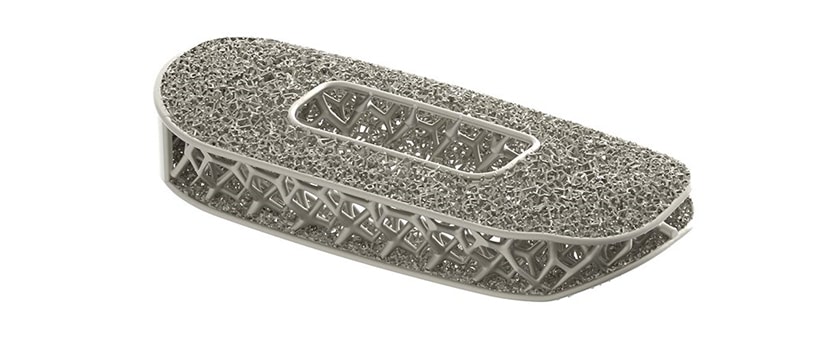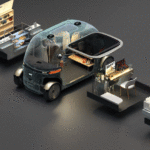Medical 3D printing news of the last few months has been dominated largely by coronavirus-themed stories. Masks, ventilators, valves… even vaccine discovery aided with 3D printing.
But the medical world has long enjoyed a relationship with 3D printing, even before recently being thrust into the public’s eyes with Covid-19.
It started with basic external prosthetics, which made use of 3D printing’s ability to manufacture custom pieces tailored to patients’ unique anatomical needs. Then as materials and methods advanced, we began to see 3D printed implants appearing inside the body.
So with people walking around with 3D printed external and internal components forming part of their bodies, it was clear that 3D printed items were fine for medical devices.
What else could be improved? How about the internal geometry of an implant? Maybe print a few trabecular structures and add a little porosity to help osseointegration? Maybe a titanium implant is causing a patient to walk funny because the meta implant itself doesn’t have the same flex as the bone it replaced.

There is indeed a way. When 3D printing is combined with new materials, generative design and topology optimisation software, the medical implant industry is getting a boost in terms of innovation and product development time.
NuVasive – Topology Optimised Spine Implants
One company making innovations into the field of spinal implants is NuVasive, as US company who have been focusing on making lightweight, stronger structures, that promote better bone growth into the implant (osseointegration).
NuVasive launched their Modulus implant back in 2017. They were able to go from concept to market in just one year with the help of 3D Systems, with its Direct Metal Printing (DMP) technology and team of application engineers.
Since then the Modulus has grown from a single product to an entire implant product line, with each product being topologically optimized to provide the best balance of weight, strength and X-ray detectability, which allows for surgeons to check up on the implant and how well it has integrated with the natural bone.
New Titanium for Printing
Of course there is more to printing implants than just making sure it has the same shape and volume as the thing it is supposed to replace, installing it inside a patient and hoping for the best.
Many factors aside from solid geometry affect osseointegration.
One such facture is the implant material itself.
A team of researchers at McMaster University have been researching use of Ti-5553 grade titanium for 3D printed implants. Most implants are currently printed with Ti64 powder feedstock… but this may not be the optimum solution for the best all round implant material. Ti-5553 is not generally common in medical implants. It is more commonly found in the structures of Russian fighter jets and helicopters.
The benefit of Ti5553 comes from having a lower elastic modulus compared to Ti64, which should reduce stress-shielding once installed in the patient.
With this in mind the team turned to comparing the aerospace alloy with its biomedical counterpart, the Ti64.
The team printed test specimens of both titanium alloys and subjected them to a process of anodizing, which altered the topology of the printed samples. Anodizing produces small surface features, called nanopores and nanotubes on the titanium samples. It is these topographical features which can assist with the bonding of bone.
The results showed that larger tubes developed on the Ti5553 after anodizing compared to the traditional Ti64. This means that not only is Ti5553 good for printing, it’s also better for osseointegration.
What’s Next?
Although there is a lot of innovation in this field, there is still a lot of work to be done in observing long term benefits. The field is still new after all.
“Titanium 3D printed cages provide a peculiar geometry which optimises bone ingrowth profile, but this needs to be confirmed by further studies,” said Enrico Tessitore, deputy chairman of the Neurosurgical Unit at Geneva University Hospitals in an interview with Spinal News International.
His institute is taking part in a randomised study involving 3D printed interbody cages as we speak.
“We perform a very early SPECT-CT scan in order to see if there is an early integration of these cages. Compared to PEEK cages, for example. 3D printing technology seems to promote fusion by facilitating ingrowth of bony cells from the endplates into the cage.”
So the future is looking fairly bright for anyone needing a spinal implant in the not too distant future.
3D printers are evolving, new materials are being tested, new software is allowing better geometries… and most importantly, these workflows are being tested and medically certified for use to assist real patients. And these workflows only feature AM, they don’t paint the full picture. Robotic guided, augmented reality navigated surgical tools will all play a part in improving spinal surgery in the next decade.
And as one approaches middle age with all the bodily failures that go with it, that can only be a good thing.

 Direct Metal Printing Design Guide
Direct Metal Printing Design Guide
 NuVasive Taps AM Ecosystem to Optimize Spine Implant Technology
NuVasive Taps AM Ecosystem to Optimize Spine Implant Technology
 Metal 3D Printed Conformally-Cooled Injection Mold Increases Production Rate by 30%
Metal 3D Printed Conformally-Cooled Injection Mold Increases Production Rate by 30%
 Optimize Fluid Dynamics with 3D Printing
Optimize Fluid Dynamics with 3D Printing








